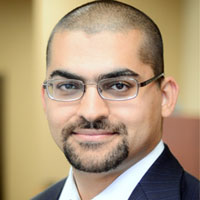What is Hair Graft?
Hair graft or hair transplant refers to the process of transplanting hair from the donor area to the recipient area. In most hair transplants, hair follicles are taken from the back side of the patient’s scalp and transplanted them into bald areas.
Types of Hair Grafts
Depending on the type of hair transplant technique, a hair graft may contain a single hair follicle, a single follicular unit, multiple follicular units or even 20 or more follicles. Hair grafts are broadly classified into single grafts and micro grafts.
Single Grafts:
Single grafts, also known as follicular unit extraction, refer to the process of transplanting a single hair follicle at a time. This type of hair grafts are used to create a natural looking new hair line. However, this type of hair graft requires expertise and precision, and it’s costlier than other hair grafts procedures. Follicular unit extraction (FUE) also requires more than one session of surgery. This type of procedure is ideal for people suffering from a thin line of baldness or who prefer very short hair cuts like burr cut or butch cut. The average price of FUE in the United States is $7000 per session. Patients usually need one to three sessions.
Micro-grafts:
Micro-grafts refer to extracting three or four hair follicles at a time and transplanting them as a group. This creates a fuller, thicker appearance in your new hair than a single graft. This type of hair grafts are ideal for people suffering from severe baldness. As the hair is transplanted in groups, it might give a “patched” appearance on your scalp, so you may not be able to cut your hair very short. The main advantage of this procedure is that
hair transplant cost is much less than single graft procedure. You can also get thousands of follicles transplanted in a single visit, so most of you may be able to complete the entire procedure in one session.Double Follicular Units (DFU) and Triple Follicular Units (TFU) are two other types of hair grafts available. In DFU, the grafts are placed in two rows while in TFU they are placed in three rows. One DFU or TFU is equivalent to several FUE sessions, so patients can see the results quickly and with lesser cost. Average price of DFU or TFU is between $4,000 and $9,000. In most cases, patients require only one session.
Before deciding on the hair graft procedure, you must consult a hair restoration surgeon who is well acquainted with all of these procedures. Many hair surgeons offer free consultation. It is important that you share your exact requirements with your hair surgeons and seek expert opinion on your hair transplant. These are permanent procedures and cannot be reversed; so you should be extremely careful while choosing these procedures.
Posted in
Hair Transplant by:
Sang Ale
2012-10-08 | Hairfear
Frequently asked questions about hair transplant procedures
How much does a hair transplant cost?
Hair transplants can vary in price based off of the area in the world that you are interested in getting a hair transplant as well as the size of the area where you may need a hair transplant. Experienced doctors in the United States will often charge some of the highest prices for a hair transplant worldwide and this is why so many travelers make the move to other parts the world like Turkey, India, Thailand, Mexico...etc for their hair transplants.
Will a hair transplant hurt?
Although hair transplants may look like a particularly
unpleasant or painful experience is actually very little discomfort involved
with the surgery itself. Hair transplants are always done under an anesthetic so there's absolutely zero pain during the treatment itself. Many people actually relate the process as being very similar to going to the dentist for filling or root canal. Mild pain can persist over the course of postop treatment but he generally just resumes for a few days.
Who can deliver the best surgery?
It's usually best to consider working with surgeons who have and IAHRS certification or international alliance of hair restoration surgeons recognition. IAHRS can often deliver recommendations for the best surgeons in each particular area.
Is this scarring noticeable?
Any type of hair transplant will require the use of incisions throughout the scalp. There can also sometimes be a small scar from the donor area towards the back of the scalp. Asking to look at photos of the surgeon's previous work will help you to see roughly how bad the scarring could be. In most cases an experienced professional can limit the look of scarring and noticeable marks from the surgery.
How long does it take for the hair to grow?
In most cases hair growth will start within eight months and you can start to see a full effect from the hair transplant after a full year. The initial signs of growth can usually start between 3 to 4 months after the surgery.
Are the results permanent?
The hair follicles that are transplanted are generally the ones which are genetically resistant against the symptoms of baldness. As long as you receive hair loss treatment later in your life after the symptoms of balding have started to subside, you can have a better chance at permanent results.
While everyone know you've had surgery?
If you want to limit the chance that people may find out about your surgery it's important to give at least three weeks of healing as the surgical area will be affected and red just after surgery. After around a month of healing it can look far less noticeable. You could consider wearing a hat while time passes or opting for some extra time off if possible.
How long should I rest after surgery?
It's recommended to rest for at least a few days after surgery so that your body can recover. Trenton to over exert yourself and limit sexual activity, running in the gym for around 10 days after surgery.
Is it possible to lose more hair as a result of surgery?
There is always a chance of shock loss which happens when the hair is weak and miniaturizing after the surgery. As long as the surgeon is choosing the correct hair follicles and performing the surgery well it's possible to minimize the chance of this happening however.
Will I need another hair transplant?
The need for another transplant really depends on the individual. With a solid foundation surgery and working to potentially bolster results with drug therapy, you can improve the stability of the hair that was transplanted as well as prevent further loss. Getting a hair transplant early
on in your 20s or early on in life could lead to needing long-term transplants as hair loss can be progressive.







